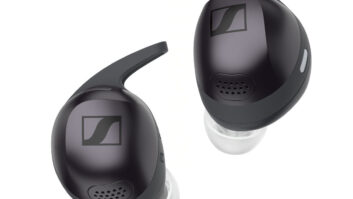One of the least publicized but
most expensive hidden costs
within the consumer electronics
industry is the abuse of service
warranties.
In a tough economy in which claims
have steadily escalated, and amid fierce
competition and tight margins, no one
can afford to pay for false warranty
claims, but unfortunately virtually every
company does. Service warranty fraud
in CE is a quiet crisis, a problem badly in
need of renewed focus and new tools.
For example, mobile device makers
already spend nearly $15 billion
annually on warranties, amounting
to between 2 percent and 3.5 percent
of their overall revenue. That’s money
most companies willingly spend to
maintain strong, positive relationships
with customers. That same openness,
though, can make fraud detection very
difficult, and the resulting waste can be
devastating. From hours lost recouping
money when fraud is detected late, to
time spent by network engineers to prevent
abuse in the first place, it puts a severe
strain on businesses
that need to
build customer loyalty,
but also need to
protect themselves
from abuse.
While warranty
repairs can be handled
by a variety of
providers ranging
from extended-service-
contract companies
to retailers and manufacturers
with servicing capabilities, CE warranty
fraud in the U.S. is largely limited to
the smaller independent servicers that
handle returns. Typically, manufacturers
pay these service providers based
on the volume of claims they file. Unfortunately
in today’s economic environment,
some of these companies are
tempted to take advantage of the system
in order to increase their repair
profits in what is essentially a low-margin
business.
They do this in a variety of ways, such
as reusing device serial numbers, bypassing
or hacking device detectors in
service software, failing to return modules
or spare parts to the manufacturer,
overstating repair expenses, or using
fake proof-of-purchases to claim devices
that are outside the equipment master
warranty period.
To help uncover and prevent such
fraud, IBM has launched a pilot program
with a CE manufacturer that uses
sophisticated analytics to detect warranty
abuses. The program, which will
be followed by wider rollouts later this
year, is based on IBM’s Fraud Abuse
Management System (FAMS), which
is already being used to help the medical
insurance industry combat fraudulent
clams, and by governments to zero
in on tax cheats.
The system compares service providers
in a specific specialty and geography to
determine which ones may be behaving
oddly. Through this analysis of incoming
warranty claims, the system finds patterns
and suspicious behavior that can
be an indication of fraud or abuse.
The ability to glean insights from
oceans of data can help CE companies
reduce the risk of warranty fraud. Such
advances in computational power and
algorithmic modeling are providing
new ways to see who is up to old tricks,
and who may be inventing new ones.
Shaun Barry heads IBM’s Global Business
Services Fraud and Risk Management
practice, and can be reached at [email protected].













